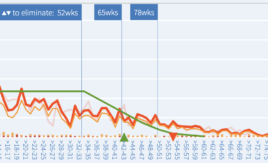The cost of restoring 18 week waits
With some guesses about the costs per case, I reckon recovering 18 weeks sustainably might cost £2.1 billion next year and £350 million the year after, if other pressures and enough mainstream capacity are funded. Or £4.2 billion next year and £1 billion the year after, if austerity continues.








